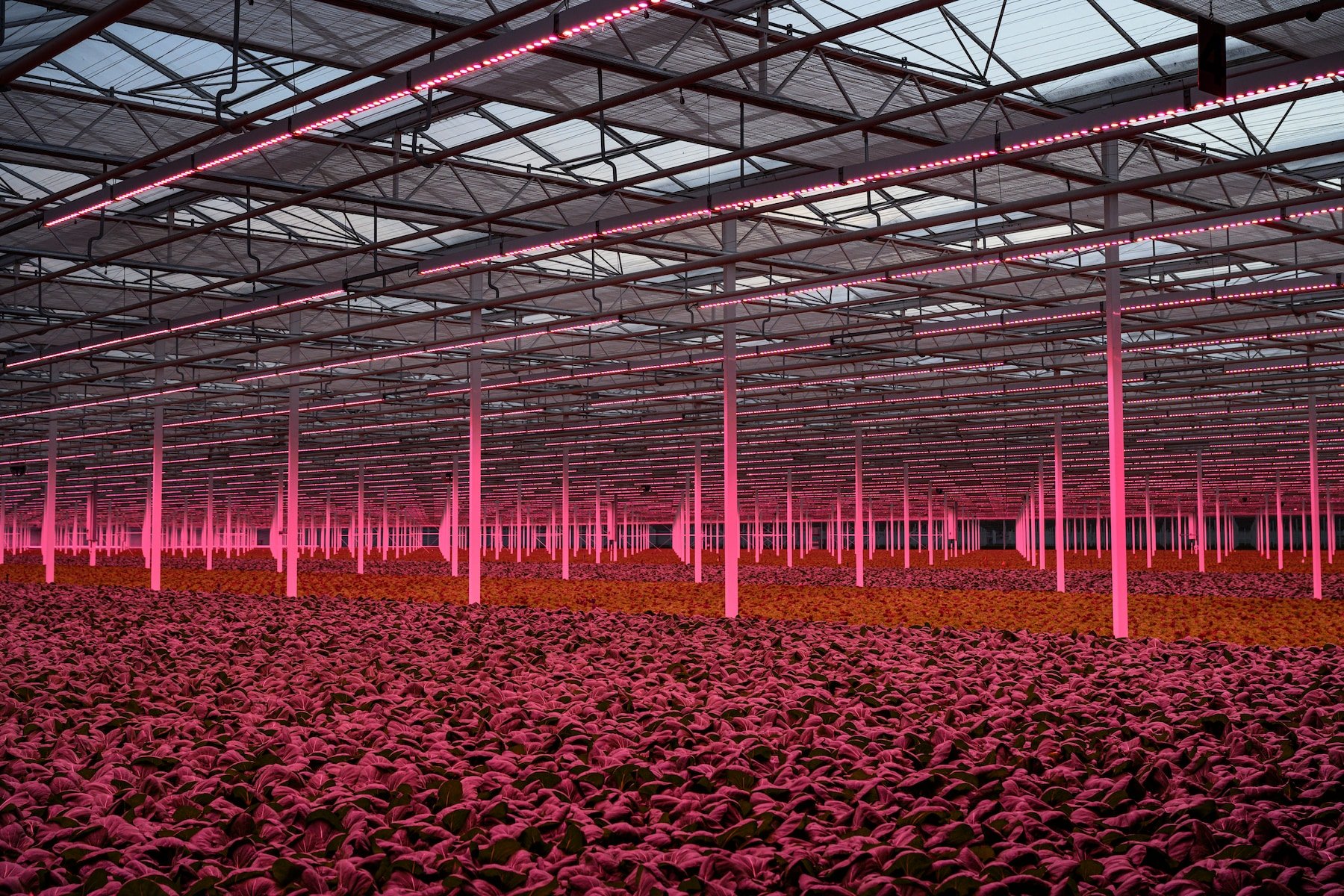Once a luxury of the elite in ancient Rome, greenhouses have evolved into vital infrastructures for sustainable food production. By leveraging cutting-edge technology and innovative practices, the transformative potential of Controlled Environment Agriculture can offer resilient solutions to produce more food with fewer resources to feed a growing population, ensuring a healthier future for our planet.
Controlled Environment Agriculture
An Infrastructure for Sustainable Food Production
The significance of greenhouses in modern agriculture cannot be overstated. As integral components of controlled environment agriculture (CEA), greenhouses offer a solution to some of the most pressing challenges in global food production. They allow for year-round cultivation by regulating climate conditions within an enclosed structure. Historically a luxury of the elite, greenhouses have evolved to play a pivotal role in addressing food insecurity and mitigating environmental impacts. This case study explores the multifaceted benefits of greenhouses, their historical evolution, technological advancements, and their potential to transform future food production.
Historical Context
The concept of greenhouses dates back to 30 C.E., with the Romans pioneering early forms to grow cucumbers year-round for Emperor Tiberius. These initial structures featured wheeled plant beds and roofs made from translucent stone or oiled cloth to retain heat. Over the centuries, greenhouse technology advanced significantly. The Italians are credited with developing the first modern greenhouses using glass, making them accessible to a broader public after the repeal of the window glass tax in the 16th century. The industrial revolution further popularized greenhouses, making them affordable for the middle class and expanding their use globally.
The Palm House at Kew Royal Botanic Gardens in England was constructed in 1844 to house exotic plant varieties brought back from abroad. | Source: itinari
Land and Location
Greenhouses can be constructed in a variety of locations, from urban rooftops to rural farmlands. The flexibility in location makes them a resilient solution to adverse growing conditions. For instance, Gotham Greens operates a 75,000 sq ft rooftop greenhouse in Chicago, demonstrating innovative use of urban space for agriculture. Similarly, in Saudi Arabia, greenhouses have been developed to counter the challenges posed by arid climates, utilizing advanced technology to ensure efficient water use and high yields.
a view of part of the network of greenhouses in the Netherlands. | Source: Washington Post
Technological Advancements
The integration of advanced agricultural technology (AgTech) is crucial for modern greenhouses. Basic systems control temperature and light, while more sophisticated setups use AI, robotics, and IoT to optimize growing conditions and enhance productivity. For example, Dutch greenhouses utilize 90% less water than traditional farms by employing precise irrigation technologies informed by data collected from various sensors. This efficiency not only conserves resources but also increases crop yields, making greenhouses a viable solution for large-scale food production.
A robotic arm used in the harvesting of produce in a greenhouse is an example of the technology available for agricultural purposes to those who can afford it. | Source: Industry Wired
Educational and Community Impact
Greenhouses also serve educational purposes, offering learning opportunities in botanical gardens, community gardens, and schools. These spaces provide hands-on experience in plant care, horticulture, and sustainable farming practices. Educational programs engage communities, fostering a deeper understanding of food production and sustainability. Moreover, community gardens with greenhouses can generate additional revenue and empower individuals to take charge of their own food production, enhancing food security at the local level.
Economic and Environmental Considerations
Constructing and maintaining greenhouses requires significant investment. For large-scale operations, such as those undertaken by Kentucky Fresh Harvest, this can amount to millions of dollars. These investments are justified by the high yields and resource efficiency achieved through technological integration. However, the high initial costs pose a barrier for smaller-scale or community-based greenhouses. Despite these financial challenges, the environmental benefits of greenhouses are substantial. They reduce reliance on natural, non-renewable resources and minimize the environmental footprint of traditional farming practices.
Policy and Partnerships
Policy support and strategic partnerships are essential to maximize the potential of greenhouses. Government policies can facilitate the allocation of land for community greenhouses and provide subsidies for technology and resource use. Partnerships with restaurants, grocery stores, and other businesses ensure a steady demand for greenhouse produce, integrating them into local food systems. Innovative approaches, such as integrating greenhouses into urban infrastructure or using digital platforms for direct-to-consumer sales, can further enhance their impact.
An examination of the system dynamics of greenhouses highlighting problem areas and opportunity spaces.
Future Prospects
Greenhouses offer promising solutions to the increasing demand for food due to population growth and climate change. By redefining system goals and fostering collaboration across sectors, greenhouses can contribute to a sustainable and equitable future. They hold the potential to transform food production, improve public health, and reduce environmental impact. As we look towards the future, the role of greenhouses in achieving global food security and sustainability will become increasingly critical.
This case study highlights the transformative potential of greenhouses in modern agriculture. By leveraging advanced technologies, fostering community engagement, and securing policy support, greenhouses can address some of the most pressing challenges in food production. Their ability to produce high yields with minimal resources positions them as a key component of sustainable agriculture. As we continue to innovate and adapt, greenhouses will play an essential role in ensuring a resilient and secure food future.




